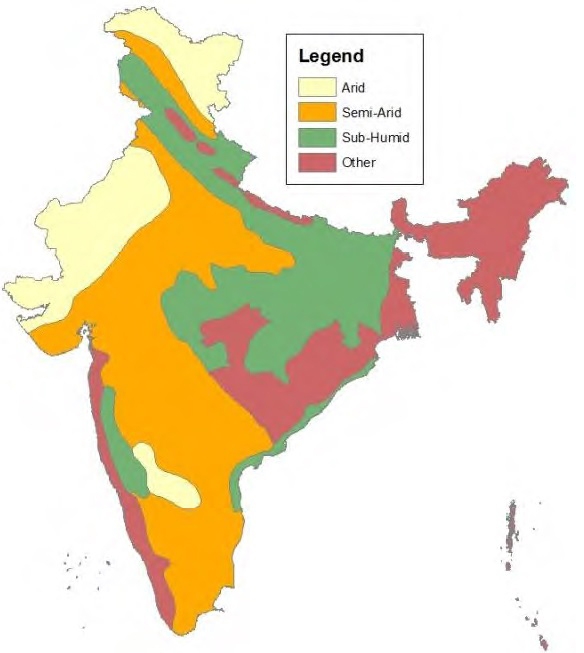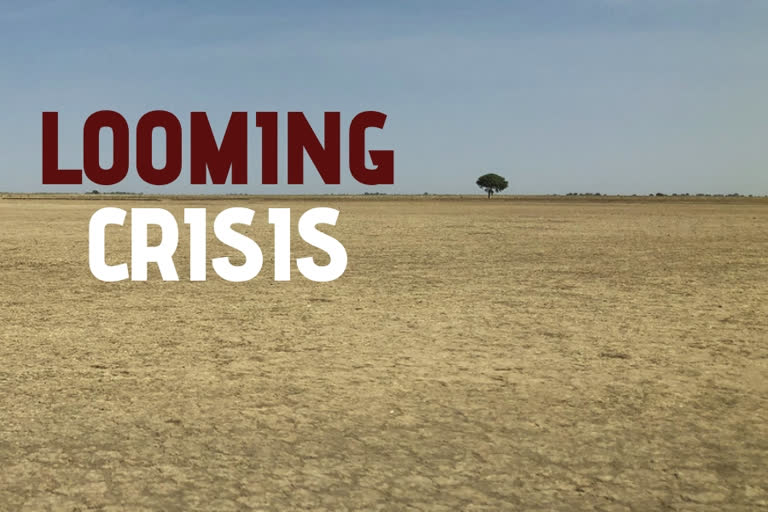Hyderabad: India is facing the growing crisis of land degradation. Over 30% of India’s land area (96 million hectares), has been degraded due to several factors such as deforestation, over-cultivation, soil erosion and depletion of wetlands etc. This land loss is not only eating away India’s gross domestic product by 2.5% every year by affecting its crop yield, but also aggravating climate change events in the country which, in turn, are causing even greater degradation.
Forests are one of the most important solutions to check climate change. But India has lost 1.6 million hectares of forest cover over 18 years to 2018. The government allowed felling of more than 10 million trees in India over five years to 2015. Over 500 projects in India’s protected areas and eco-sensitive zones were cleared by the National Board of Wildlife over the first four years of the Narendra Modi-led National Democratic Alliance government between June 2014 and May 2018. In comparison, the preceding United Progressive Alliance government had cleared 260 projects between 2009 and 2013.
If things continue in the same fashion, 80% of the total farmers in India, who account to be small and marginal farmers will be badly affected in the near future. The agrarian economies like India – which is the world’s largest producer of milk, pulses and jute, and ranks as the second-largest producer of rice, wheat, sugarcane, groundnut, vegetables, fruit and cotton, as per the UN data, will land under the risk of food security. The growth and productivity of pastoral animals (livestock) will also be impacted due to soil erosion and resultant climate change. It was said by none other than Intergovernmental Panel on Climate Change (IPCC), an intergovernmental body of the United Nations studying climate change.
Read: Is excess soil erosion the beginning of food crisis across the globe?
The loss of forest cover had already deprived India 1.4% of its GDP annually, according to a study by The Energy and Resource Institute (TERI), a Delhi-based NGO. Many countries like India, facing a critical issue of climate change, will end up with their land losing its capacity to absorb carbon dioxide (CO2), a greenhouse gas (GHG), which is the major factor worsening global warming. Already, over 1 million species on earth are on the verge of extinction, threatening global food security, largely due to habitat loss and land degradation.
The Indian government had realized that the tribals and other indigenous people, who have knowledge of the local ecosystem, play an important role in protecting the forests. Their involvement in decision-making and governance will ideally help in protecting the eco-system, which encompasses protection of soil erosion, forests and in turn boosts the efforts against climate change. The Forests Rights Act, passed in 2006, could be an excellent tool to check climate actions as the Act recognises the rights of tribes and other traditional forest dwellers to access, manage, protect and govern the forestland and natural resources that they have been using for generations.
But the process of recognition of rights under FRA is very slow. The government has only been able to settle FRA claims over 12.93 million hectares of forests as on April 30, 2019, against a potential of 40 million hectares of forestland across the country. Besides, an ongoing case in the Supreme Court of India also threatens to evict 2 million forest dweller families whose FRA claims have been rejected. Currently, 21 state governments are in the process of reviewing all the rejected claims.
The Soil degradation due to salinity and erosion due to water and air caused by extreme weather events and other human activities in India had incurred losses of Rs 72,000 crore --more than the agriculture budget of Rs 58,000 crore in 2018-19--according to the TERI study. This issue is pertinent for India, as the country struggles to feed its growing population. India was ranked at 103rd position in 2018 among 119 countries on the Global Hunger Index, three spots down from 100th in 2017.
Read: Increasing carbon emissions 'suicidal' to mankind
India’s wetlands cover around 152,600 sq km, nearly 5% of the country’s geographic area and nearly twice the size of Assam. But deforestation, climate change, water drainage, land encroachment and urban development are depleting these wetlands. Every year, 2 to 3% of the total area is being lost across the country.
About 40 per cent of mangrove forests in West Coast of India have been converted into farmlands and housing colonies over the last three decades. The wetlands are critical in the fight against global warming as they conserve ‘high-carbon ecosystems’ that quickly absorb a high amount of carbon. India has not made any concrete steps to restore wetlands and reclaim degraded soils. The dilution in Coastal Regulatory Zone Notification, 2018, which is India's only protection system for the fragile ecology, has opened it up for large-scale development projects by realtors. If regulations listed in the Coastal Regulatory Zone Notification, 2018 are implemented properly, coastal zones and fragile ecosystems can be safeguarded.

Global warming is another grave threat to India, as 69% of its geographical area is dry land including arid, semi-arid and dry sub-humid stretches. These drylands are vulnerable to water stress and the drought intensity is projected to increase further even in the most ideal conditions of 1.5 deg C warming by 2050. With 600 million people facing extreme to high water stress, which is about half of the country's population, India is the 17th most water-stressed country in the world, along with the countries which receive almost half the annual rainfall as India, as per the IPCC findings.
DELHI DECLARATION: The 14th edition of the Conference of Parties (COP-14) to the UN Convention to Combat Desertification (UNCCD) that ended recently in Delhi, had called the nations to adopt Peace Forest Initiative, along the borders to reclaim degraded lands in conflict-torn border areas of the world to alleviate tensions and build trust between communities and nations. The member countries of the meet have also agreed to make the Sustainable Development Goal target of achieving land degradation neutrality by 2030, as a national target for action.
Prime Minister Narendra Modi at COP-14, proposed to set up a global technical support institute for the member countries of the UNCCD for their capacity building and support regarding the Land Degradation Neutrality Target Setting Program. India also called upon the leadership of UNCCD to conceive a global water action agenda which is central to the Land Degradation Neutrality strategy. By 2030 India also made the commitment to halt any further land degradation and rehabilitate at least 30 million hectares degraded wasteland, forest and agricultural land (covering 10 mha each) out of the total 96.4 million hectares of degraded land.



